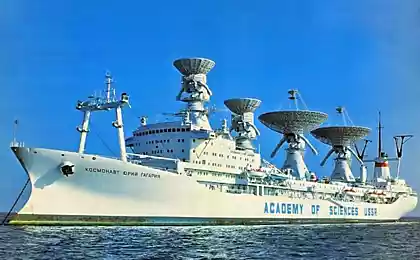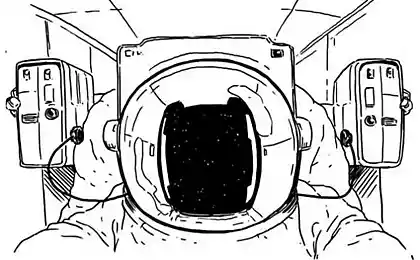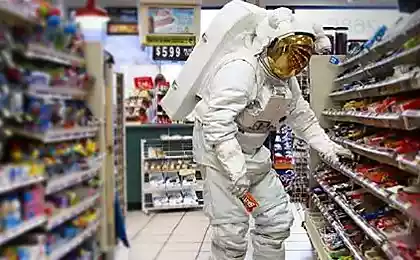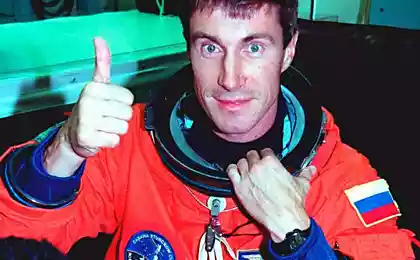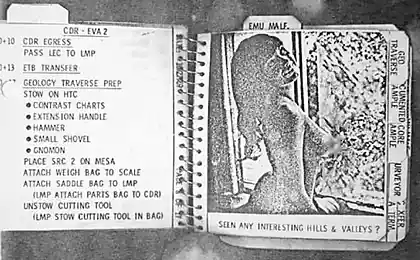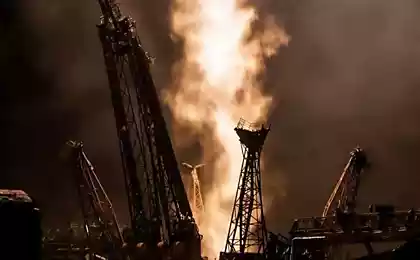2094
Ckafandry astronauts
Despite the fact that the last couple of years, we often hear about the crash of the domestic space projects, the Russians still can be proud that our suits are lighter and cheaper US, and our purchases cesspoolage installation NASA.
Where do spacesuits Russian cosmonauts photo essay from the factory "Star»
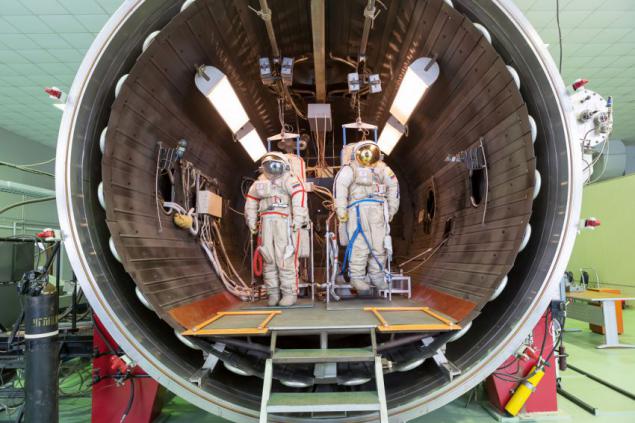
"Star" began to work in 1952. True if the plant does not have a name - the company held as «№918» and was one of the most sensitive sites of the Ministry of Aviation Industry of the USSR. After adjustment with his shot secrecy, convert to public companies, and he became one of the leading developers of equipment for the entire aerospace industry. In the 50s there were made life-support system, in which there was the dog Laika, and suit for the passenger ship "Vostok" - Yuri Gagarin. Who "star" produce mountaineering gear for pilots - suits, suits, helmets, oxygen masks, fire extinguishing systems, ejection seats, parachutes and inflatable slides.
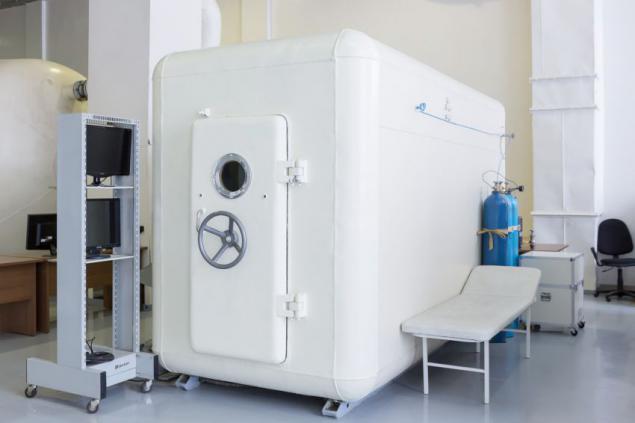
At the factory not only produce suits and diving suits, but also experience them in conditions close to real. For example, in the stationary pressure chamber for the testing personnel readiness for high-altitude flight and adaptation in a rarefied atmosphere. Future astronauts dressed, of course, in the production of "Stars." Just in this chamber before training Alexei Leonov spacewalk.
In this chamber undergo compulsory training all the astronauts who fly to the ISS. Previously, the crew consisted of three men, now both fly 6. Three of them remain at the station for six months, as part of the crew in the middle of this period varies.
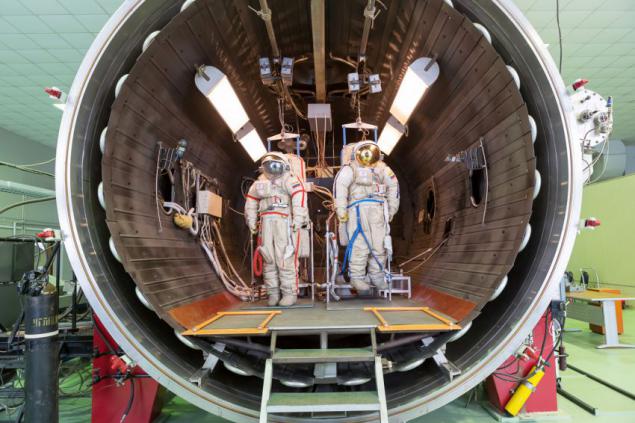
Ckafandr "Orlan-MK" to work in open space weighs 110 kg. American counterpart, weighs 136 kg and, unlike Russia, is not adapted to the age of self-service station. In addition, it is impossible to put on yourself. US EMU and MEGA-EMU also much more expensive: 10 years ago, they cost about 15 million dollars, and "Orlan" costs only 3 million. EMU for repair must descend to the ground - for reference: delivery 1 kg of cargo to the ISS costs $ 25,000 return - $ 60 000.
Now "Orlan" is sewn in the fifth modification. By duralumin enclosure attached sleeves and pant legs. All wires and hoses, life-support systems are mounted under the cuirass. On the door of the hatch is mounted computer that analyzes information from all sensors of the suit - they order 50. Cosmonaut regulates the temperature itself, pulling the lever water cooling. "Orlan" - a small spacecraft. Its production takes more than six months, and the official shelf life - 4 years. Of course, in fact exploiting them longer.
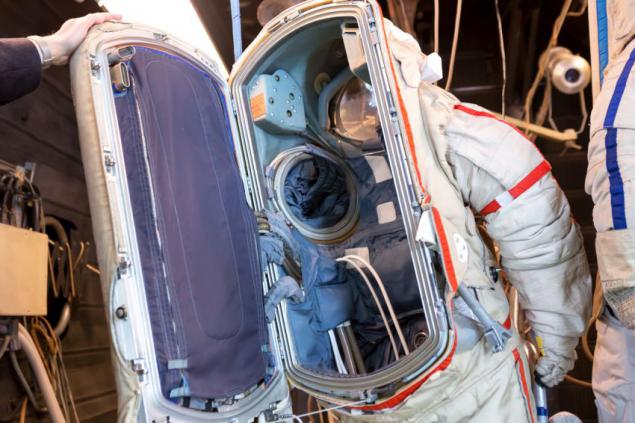

Every astronaut must wear a suit yourself and then spend two o'clock in weightlessness under the supervision of specialists. But even if the engineers diverted, the computer built into the spacesuit, astronaut tells what to do in a given situation.
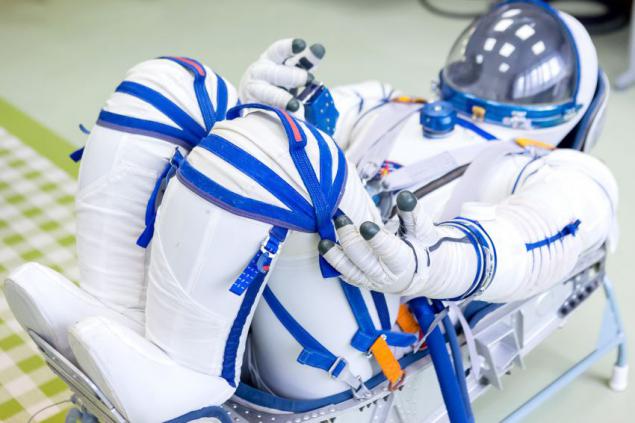
Soft suit "Falcon" is used during takeoff and landing, always sewn individually for each astronaut. Besides him, for each individual astronaut cast cradle - a special seat. First of plaster cast made of the back and the priests, and then on it is made of polyurethane model. This is necessary to prevent injury in the event of engine failure soft landing. Each astronaut going to the ISS, arrives for removal of measures on the "stars". Then two months sewn suit. Ready, "Sokol" he personally experienced two hours a hyperbaric chamber, and if you do not feel any discomfort, the suit is considered ready. This outfit weighs 10-12 kg.
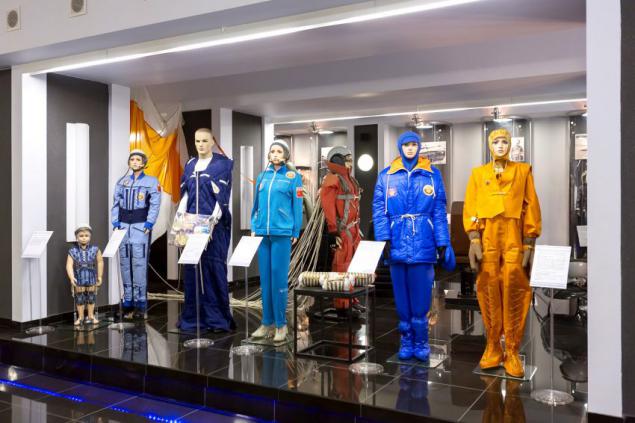
Besides skanfandrov for astronauts and pilots, production sew costumes preventive "Penguin" (far left) and "Chibis" (dark blue. Suit "Chibis" needed for training the cardiovascular system before descending to the ground. Inside it, low blood pressure, and thanks to him, the blood is retained in the lower body, as is the case with Earth's gravity. "Penguin" is advisable to wear permanently on the ISS for the prevention of the negative effects of weightlessness. On the "Star" also sew things easier - tracksuits, warm clothing, bedding, underwear. But wetsuit "Trout" (far right) along with warm wool suit and support afloat - in the event that the pilot was in the cold sea.

Yuri Gagarin's space suit, in which he flew into space, too, is hanging in the museum, despite persistent rumors that he was sold. Near hanging suit Valentina Tereshkova.

Inside the suit "Penguin" stretched rubber bands that create a strain on the muscles and bones. He needs to stay in a long weightless body was in good shape and muscle atrophy. Now astronauts prefer him simulators, but in medicine it is still very popular and is used in some centers for the prevention and treatment of cerebral palsy. Until recently, the plant had a separate department, sewn to the needs of the blades "Penguin", but now it has been a private firm. Besides clothes, medicine has used anti-shock suit "Chestnut": the great loss of blood, he strongly compresses the veins in the legs and pushes up blood, thus maintaining the blood supply to vital organs. Thanks to "Chestnuts" can sustain life of the victim to the hospital before delivery.
System ACS - Cesspool device or simply toilet - pride SPE "Star". The design was so successful that the Americans on their segment of the ISS bought just this.
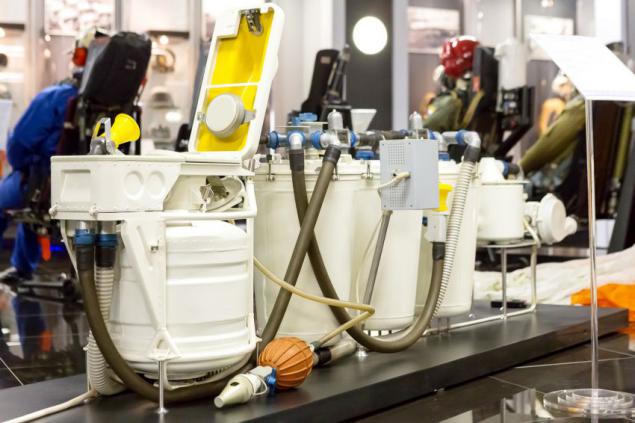
This docking hatch through which pass from one spacecraft to another. Previously, internal hatches on the ISS was not, so the astronauts had to move the spacewalk.
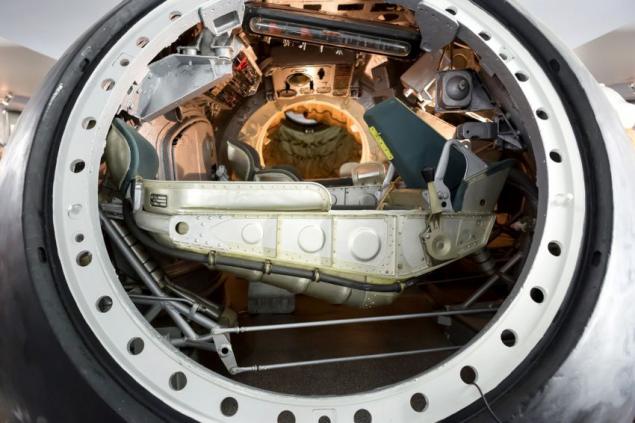
Source:
Where do spacesuits Russian cosmonauts photo essay from the factory "Star»

"Star" began to work in 1952. True if the plant does not have a name - the company held as «№918» and was one of the most sensitive sites of the Ministry of Aviation Industry of the USSR. After adjustment with his shot secrecy, convert to public companies, and he became one of the leading developers of equipment for the entire aerospace industry. In the 50s there were made life-support system, in which there was the dog Laika, and suit for the passenger ship "Vostok" - Yuri Gagarin. Who "star" produce mountaineering gear for pilots - suits, suits, helmets, oxygen masks, fire extinguishing systems, ejection seats, parachutes and inflatable slides.

At the factory not only produce suits and diving suits, but also experience them in conditions close to real. For example, in the stationary pressure chamber for the testing personnel readiness for high-altitude flight and adaptation in a rarefied atmosphere. Future astronauts dressed, of course, in the production of "Stars." Just in this chamber before training Alexei Leonov spacewalk.
In this chamber undergo compulsory training all the astronauts who fly to the ISS. Previously, the crew consisted of three men, now both fly 6. Three of them remain at the station for six months, as part of the crew in the middle of this period varies.

Ckafandr "Orlan-MK" to work in open space weighs 110 kg. American counterpart, weighs 136 kg and, unlike Russia, is not adapted to the age of self-service station. In addition, it is impossible to put on yourself. US EMU and MEGA-EMU also much more expensive: 10 years ago, they cost about 15 million dollars, and "Orlan" costs only 3 million. EMU for repair must descend to the ground - for reference: delivery 1 kg of cargo to the ISS costs $ 25,000 return - $ 60 000.
Now "Orlan" is sewn in the fifth modification. By duralumin enclosure attached sleeves and pant legs. All wires and hoses, life-support systems are mounted under the cuirass. On the door of the hatch is mounted computer that analyzes information from all sensors of the suit - they order 50. Cosmonaut regulates the temperature itself, pulling the lever water cooling. "Orlan" - a small spacecraft. Its production takes more than six months, and the official shelf life - 4 years. Of course, in fact exploiting them longer.


Every astronaut must wear a suit yourself and then spend two o'clock in weightlessness under the supervision of specialists. But even if the engineers diverted, the computer built into the spacesuit, astronaut tells what to do in a given situation.

Soft suit "Falcon" is used during takeoff and landing, always sewn individually for each astronaut. Besides him, for each individual astronaut cast cradle - a special seat. First of plaster cast made of the back and the priests, and then on it is made of polyurethane model. This is necessary to prevent injury in the event of engine failure soft landing. Each astronaut going to the ISS, arrives for removal of measures on the "stars". Then two months sewn suit. Ready, "Sokol" he personally experienced two hours a hyperbaric chamber, and if you do not feel any discomfort, the suit is considered ready. This outfit weighs 10-12 kg.

Besides skanfandrov for astronauts and pilots, production sew costumes preventive "Penguin" (far left) and "Chibis" (dark blue. Suit "Chibis" needed for training the cardiovascular system before descending to the ground. Inside it, low blood pressure, and thanks to him, the blood is retained in the lower body, as is the case with Earth's gravity. "Penguin" is advisable to wear permanently on the ISS for the prevention of the negative effects of weightlessness. On the "Star" also sew things easier - tracksuits, warm clothing, bedding, underwear. But wetsuit "Trout" (far right) along with warm wool suit and support afloat - in the event that the pilot was in the cold sea.

Yuri Gagarin's space suit, in which he flew into space, too, is hanging in the museum, despite persistent rumors that he was sold. Near hanging suit Valentina Tereshkova.

Inside the suit "Penguin" stretched rubber bands that create a strain on the muscles and bones. He needs to stay in a long weightless body was in good shape and muscle atrophy. Now astronauts prefer him simulators, but in medicine it is still very popular and is used in some centers for the prevention and treatment of cerebral palsy. Until recently, the plant had a separate department, sewn to the needs of the blades "Penguin", but now it has been a private firm. Besides clothes, medicine has used anti-shock suit "Chestnut": the great loss of blood, he strongly compresses the veins in the legs and pushes up blood, thus maintaining the blood supply to vital organs. Thanks to "Chestnuts" can sustain life of the victim to the hospital before delivery.
System ACS - Cesspool device or simply toilet - pride SPE "Star". The design was so successful that the Americans on their segment of the ISS bought just this.

This docking hatch through which pass from one spacecraft to another. Previously, internal hatches on the ISS was not, so the astronauts had to move the spacewalk.

Source:
